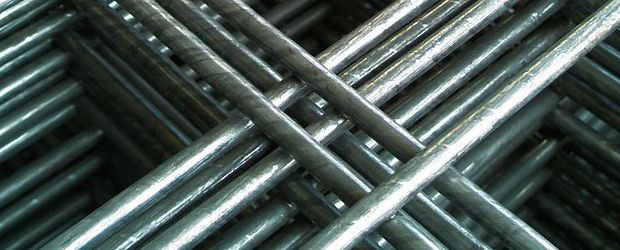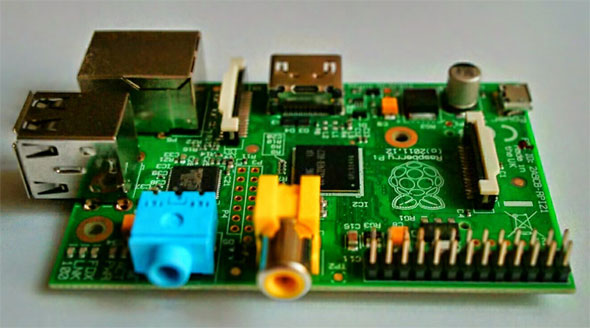"Solid" entries

Solid 2015: submit your proposal
O'Reilly's Solid Conference, on IoT and the intersection between real and virtual, will return to San Francisco on June 23-25, 2015.
Last May, we engaged in something of an experiment when Joi Ito and I presented Solid, our conference about the intersection between software and the physical world. We drew the program as widely as possible and invited demos from a broad group of large and small companies, academic researchers, and artists. The crowd that came — more than 1,400 people — was similarly broad: a new interdisciplinary community that’s equally comfortable in the real and virtual worlds started to, well, solidify.
I’m delighted to announce that Solid is returning. The next Solid will take place on June 23-25, 2015, at Fort Mason in San Francisco. It’ll be bigger, with more space and a program spread across three days instead of two, but we’re taking care to maintain and nourish the spirit of the original event. That begins with our call for proposals, which opens today. Some of our best presentations in May came from community members we hadn’t yet met who blew away our program committee with intriguing proposals. We’re committed to discovering new luminaries and giving them a chance to speak to the community. If you’re working on interesting things, I hope you’ll submit a proposal.
We’re expecting a full house at this year’s event, so we’ve opened up ticket reservations today as well — you can reserve your ticket here, and we’ll hold your spot for seven days once registration opens early next year. Read more…

Saul Griffith: build soft, not solid
Soft, or compliant, robots can be safer, lighter, more efficient, and easier to control.
As we get ready to launch the 2015 version of Solid, our conference about the intersection between software and the physical world, I’ve been revisiting some lessons from Solid 2014.
For instance, Saul Griffith, founder and principal scientist at Other Lab, advises that many machines would do well to skip solidity altogether. Soft, or compliant, robots can be safer, lighter, more efficient, and easier to control. In his work with compliant robots, Griffith has managed to substitute intelligent controls for mass—replacing atoms with bits.
Watch Griffith’s entire Solid 2014 talk below. If you’d like to be notified when the Solid 2015 call for proposals goes up and when tickets become available, be sure to sign up for the O’Reilly IoT+ newsletter.
For more videos from Solid 2014, visit our Solid YouTube playlist.

The next industrial revolution
It's all about software, but it's a little harder than that.
If you Google “next industrial revolution,” you’ll find plenty of candidates: 3D printers, nanomaterials, robots, and a handful of new economic frameworks of varying exoticism. (The more generalized ones tend to sound a little more plausible than the more specific ones.)
The phrase came up several times at a track I chaired during our Strata + Hadoop World conference on big data. The talks I assembled focused on the industrial Internet — the merging of big machines and big data — and generally concluded that in the next industrial revolution, software will take on the catalytic role previously played by the water wheel, steam engine, and assembly line.
The industrial Internet is part of the new hardware movement, and, like the new hardware movement, it’s more about software than it is about hardware. Hardware has gotten easier to design, manufacture, and distribute, and it’s gotten more powerful and better connected, backed up with a big-data infrastructure that’s been under construction for a decade or so. Read more…

Inside Solid: what won’t drones do?
How Moore's Law applies to drones — a backchannel meditation on drone limitations.
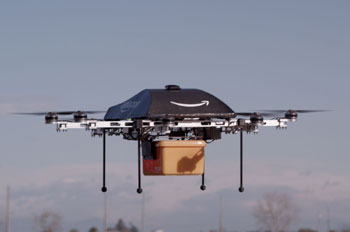 Extrapolation is great fun — especially over technology, where Moore’s Law has conditioned us to expect exponentially falling costs and fast adoption. Applied to drones, extrapolation might lead us to conclude that they’ll fill the skies soon, delivering anything we want on demand. They are, after all, rapidly getting cheaper and smarter, and drone-related announcements get tons of press.
Extrapolation is great fun — especially over technology, where Moore’s Law has conditioned us to expect exponentially falling costs and fast adoption. Applied to drones, extrapolation might lead us to conclude that they’ll fill the skies soon, delivering anything we want on demand. They are, after all, rapidly getting cheaper and smarter, and drone-related announcements get tons of press.
So, where will the drones stop? A few of us meditated on the limitations of drones last week on news that Facebook plans to use them to provide Internet connections to those who don’t have them, and on DHL’s announcement that it would begin making deliveries by drone to the island of Juist, in the North Sea. An edited excerpt of our exchange follows. Read more…

Stop hacking random stuff. It’s getting trivial.
Once we acknowledge nearly everything is insecure, we can engage in a more nuanced discussion about security.
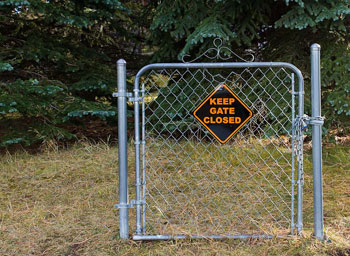 I was gratified to read Dave Aitel’s rant about junk hacking last week [via Peter Lewis and abridged below]:
I was gratified to read Dave Aitel’s rant about junk hacking last week [via Peter Lewis and abridged below]:
“Yes, we get it. Cars, boats, buses, and those singing fish plaques are all hackable and have no security. Most conferences these days have a whole track called ‘Junk I found around my house and how I am going to scare you by hacking it.’ That stuff is always going to be hackable whetherornotyouarethecalvalry.org.
…
“Yes, there is Junk in your garage, and you can hack it, and if
you find someone else who happens to have that exact same Junk, you can probably hack that, too, but maybe not, because testing is hard.“Cars are the pinnacle of junk hacking, because they are meant to be in your garage. Obviously there is no security on car computers. Nor (and I hate to break the suspense) *will there ever be*. Yes, you can connect a device to my midlife crisis car and update the CPU of the battery itself with malware, which can in theory explode my whole car on the way to BJJ. I personally hope you don’t. But I know it’s possible the same way I know it’s possible to secretly rewire my toaster oven to overcook my toast every time even when I put it on the lowest setting, driving me slowly but surely insane.
“So in any case, enough with the Junk Hacking, and enough with being amazed when people hack their junk.”

Inside Solid: who will build the “god platform” for the Internet of Things?
Everyone is racing to build the topmost layer for home automation.
Everyone’s racing to build the “god platform” for the Internet of Things: the highest, most generalized layer of intelligence and user interface that ties together connected devices and web services.
It’s tempting to look for analogy in mobile phone platforms, where Apple was initially dominant and now enjoys an extremely lucrative and influential minority position against Android. There are some crucial differences, though. For starters, adoption won’t be quite as easy; domestic appliances last for a long time, and nothing consumers have seen yet makes connected laundry seem appealing enough to justify early replacement of a washing machine. And even in cases where replacement is relatively easy, the grandest promises entail stitching everything into a seamless system — replacing just the easy stuff can seem pretty lame. Read more…

Materials that make up our world
Digital manufacturing is the future — reusable, composable, and rapid from top to bottom.
Editor’s note: This is part two of a two-part series reflecting on the O’Reilly Solid Conference from the perspective of a data scientist. Normally we wouldn’t publish takeaways from an event held nearly two months ago, but these insights were so good we thought they needed to be shared.
In mid-May, I was at Solid, O’Reilly’s new conference on the convergence of hardware and software. In Part one of this series, I talked about the falling cost of bringing a hardware start-up to market, about the trends leading to that drop, and a few thoughts on how that relates to the role of a data scientist.
I mentioned two phrases that I’ve heard Jon Bruner say, in one form or another. The first, “merging of hardware and software,” was covered in the last piece. The other is the “exchange between the virtual and actual.” I also mentioned that I think the material future of physical stuff is up for grabs. What does that mean, and how do those two sentiments tie together? Read more…

Talking to big machines
What “design beyond the screen” means for the industrial Internet.

GE’s 3.2-103 wind turbine analyzes tens of thousands of data points every second and communicates seamlessly with neighboring turbines, service technicians, and operators.
Design beyond the screen is a much broader and more transformative concept than just that, though: it encompasses changes in the relationships between humans and machines and between machines and other machines. Good design beyond the screen makes interaction more fluid and elevates both people and machines to do their best work. The impact of good design beyond the screen could be huge, and could extend well beyond consumer electronics into heavy industry and infrastructure. Read more…

Governments can bridge costs and services gaps with sensor networks
Government sensor networks can streamline processes, cut labor costs, and improve services.
Contributing authors: Andre Bierzynski and Kevin Chrapaty.
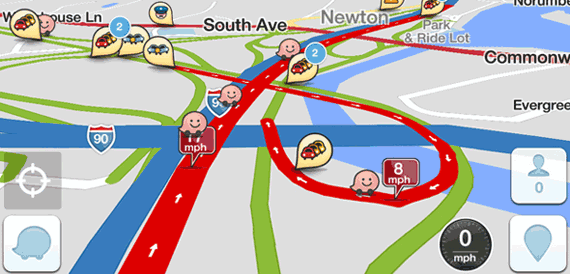
What if government agencies followed in the footsteps of Waze, a community-driven mobile phone app that collects location data through GPS and allows its users to report accidents and traffic jams, providing real-time, location-specific traffic alerts?
It’s not news to anyone who works in government that we live in a time of ever-tighter budgets and ever-increasing needs. The 2013 federal shutdown only highlighted this precarious situation: government finds it increasingly difficult to summon the resources and manpower needed to meet its current responsibilities, yet faces new ones after each Congressional session.
Sensor networks are an important emerging technology that some areas of government already are implementing to bridge the widening gap between the demand to reduce costs and the demand to improve services. The Department of Defense, for instance, uses RFID chips to monitor its supply chain more accurately, while the U.S. Geological Survey employs sensors to remotely monitor the bacterial levels of rivers and lakes in real time. Additionally, the General Services Administration has begun using sensors to measure and verify the energy efficiency of “green” buildings (PDF), and the Department of Transportation relies on sensors to monitor traffic and control traffic signals and roadways. All of which is productive, but more needs to be done. Read more…

Embracing hardware data
Looking at the collision of hardware and software through the eyes of a data scientist.
Many aspects of a hardware device can be liberally prototyped. A Raspberry Pi (such as the one seen above) can function as a temporary bridge before ARM circuit boards are put into place.
Editor’s note: This is part one of a two-part series reflecting on the O’Reilly Solid Conference from the perspective of a data scientist. Normally we wouldn’t publish takeaways from an event held nearly two months ago, but these insights were so good we thought they needed to be shared.
In mid-May, I was at Solid, O’Reilly’s new conference on the convergence of hardware and software. I went in as something close to a blank slate on the subject, as someone with (I thought) not very strong opinions about hardware in general.
The talk on the grapevine in my community, data scientists who tend to deal primarily with web data, was that hardware data was the next big challenge, the place that the “alpha geeks” were heading. There are still plenty of big problems left to solve on the web, but I was curious enough to want to go check out Solid to see if I was missing out on the future. I don’t have much experience with hardware — beyond wiring up LEDs as a kid, making bird houses in shop class in high school, and mucking about with an Arduino in college. Read more…

